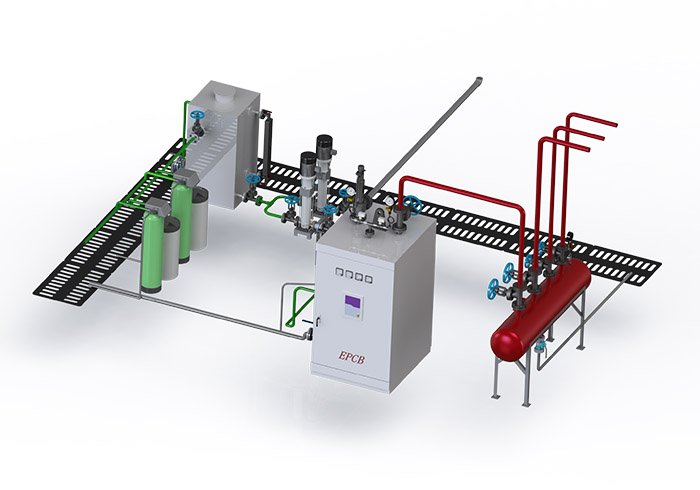There are many types of accessories for boiler auxiliary equipment, and we should pay attention to all safety accessories and valves whether they are working properly under the premise of ensuring quality, because they are the main accessories that control the operating parameters of the boiler and are very important. Common boiler safety accessories and valves include: pressure gauges, water level gauges, safety valves, high and low water level alarms, sewage devices, etc.
No matter which safety accessory or valve is abnormal, it will cause damage to the operation of the boiler. Therefore, clarifying the causes and solutions of boiler safety accessories and valves failure is very important for boiler safe and stable operation.
Through years of theoretical accumulation and on-site practice, EPCB has summarized boiler safety accessories and valve failures, causes and solutions to help your boiler operate efficiently and safely, and help you become a leader in the industry.
Pressure Gauge
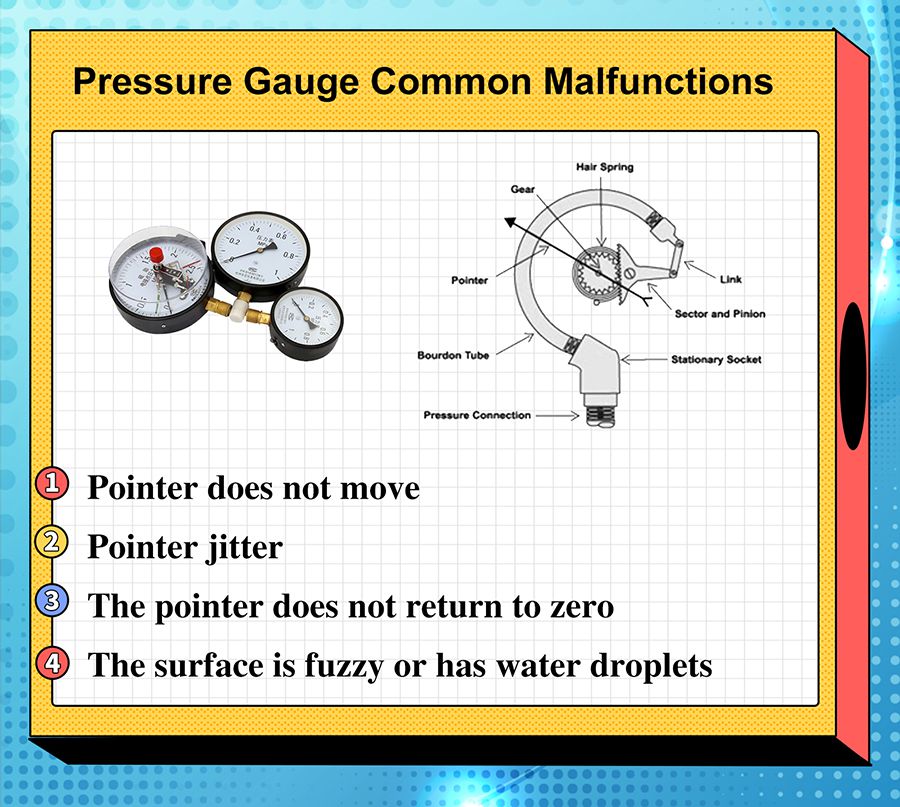
Common faults of pressure gauges include the pointer not moving, the pointer does not return to the zero position, the pointer shakes, the surface is blurred, or water drops appear.
1. The Pointer not to Move Causes and Solutions
The pointer not to move causes
①Forgot to open the cock or the position is incorrect
②The passage of the water trap of the cock and the pressure gauge is blocked
③The pointer and the central axis are loose or the pointer is stuck
④Leakage in the weld between the spring elbow and the meter seat
⑤The sector gear and pinion are loose or disconnected
The pointer not to move solution
①Unscrew the cock or adjust to the correct position
②Clean the pressure gauge, purge the channel, and replace the cock or pressure gauge if necessary
③ Fasten the pointer on the central axis, or eliminate the phenomenon of pointer jamming
④ Repair welding leakage
⑤ Check the sector gears and pinions to make them meshed
2. The Pointer not Returning to Zero Causes and Solutions
The pointer does not return to zero causes
①The spring elbow produces permanent deformation and loses its elasticity
②The balance spring on the center wheel loses its elasticity or falls off
③The passage of the cock and the water trap of the pressure gauge is blocked
④The pointer and the central axis are loose, or the pointer is stuck
The pointer not returning to zero solutions
①Replace the pressure gauge
②Replace the hairspring or reinstall
③Clean the pressure gauge, purge the channel, and replace the cock or pressure gauge if necessary
④ Fasten the pointer on the central axis, or eliminate the phenomenon of pointer jamming
3.Pointer Jitter Causes and Solutions
Pointer jitter causes
①The hairspring is damaged
②The movement of the connecting bolt between the free end of the spring elbow and the connecting rod, or the connecting bolt between the side rod and the sector gear is affected, and the sector gear shakes when the elbow expands and moves.
③The two ends of the central shaft are bent and partially blocked when rotating
④The passage of the cock or trap is partially blocked
⑤There is dirt or rust in the transmission mechanism such as pinion gear, sector gear or shaft
⑥Affected by surrounding vibration
Pointer jitter solutions
①Overhaul the hairspring
②Overhaul the combined bolts
③Replace the pressure gauge
④Purge channel
⑤Clean the pressure gauge
⑥ Eliminate vibration factors
4.Blurred Surfaces or Water Droplets Causes and Solutions
Blurred surfaces or water droplets causes
①There is no rubber gasket at the junction of the glass surface and the body, or the gasket is damaged, which makes the junction surface not well sealed
②There is leakage in the weld between the spring elbow and the meter seat
Blurred surfaces or water droplets solutions
①Add or replace rubber gasket
② Repair welding leakage
Water Level Gauge
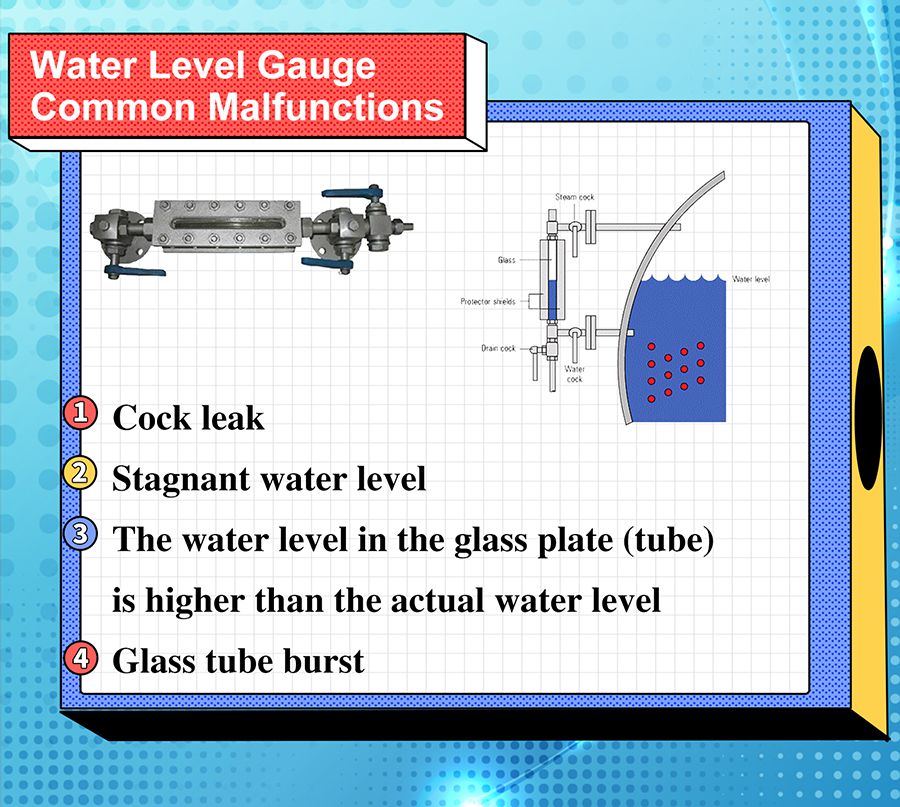
Common faults of the water level gauge include leaking cock, stagnant water level, water level in the glass plate (tube) higher than the actual water level, and glass tube burst.
1. Cock Leakage Causes and Solutions
cock leakage causes
①The material or processing of the cock is defective
②The contact surface between the plug core and the plug seat is worn and corroded
③The packing is insufficient or deteriorated, and the packing pressure is uneven
cock leakage solutions
①Replace the cock
②Grinding or replacing the cock
③Add or replace the packing, tighten the packing gland
2.Stagnant Water Level Causes and Solutions
The stagnant water level causes
①The water connecting pipe or water cock is blocked by scale, filler, etc.
②The water cock was closed by mistake
The stagnant water level Solutions
①Flush the water connecting pipe and the water cock, or use a thin iron wire to dredge
②Unscrew the water cock
3.The water level in the glass plate (tube) is higher than the actual water level causes and solutions
The water level in the glass plate (tube) is higher than the actual water level causes
①The steam cock is blocked by the packing
②The steam cock was closed by mistake
③Boiler water foams due to high alkalinity
The water level in the glass plate (tube) higher than the actual water level solutions
①Flush the steam cock or reform the packing
②Unscrew the steam cock
③Strengthen sewage discharge
4. Glass Tube Burst Causes and Solutions
Glass tube burst causes
①The quality of the glass is not good, or there are cracks at the end of the pipe
②The center line of the upper and lower pipe seats of the water level gauge is skewed
③There is no preheating after replacing the new glass tube
④Suddenly splashed with cold water on the heated glass tube, or contaminated by oil
⑤There is no expansion gap or the packing is too tight during installation
Glass tube burst solutions
①Replace the glass tube
②Align the center lines of the upper and lower pipe seats in a straight line
③Operate according to regulations
④Prevent sudden cooling of the glass tube and remove oil stains
⑤ Reserve the expansion gap, adjust the compression packing
Glass tube burst Precautions
①There are two water level gauges on the boiler. If one of them bursts, the other water level gauge can be used to monitor the water level and replace the damaged water level.
(1)Wear a protective mask and gloves, cover the steam and water sprayed by the water level gauge with a wet sack, and quickly close the steam and water cock.
(2)Remove broken glass and packing, install suitable glass tube and new packing.
(3)Preheat the new glass tube, that is, first turn on the steam and water cock. When moisture appears in the glass tube, open the water cock slightly to discharge the soda and water mixture, then slowly close the drain cock, and gradually open the steam and water cock to normal Location.
②If the two water level gauges are damaged at the same time, stop the furnace urgently, and then replace the glass tube of the water level gauge. But when the boiler is equipped with an automatic feed water regulator or a high and low water level alarm, the glass tube of the water level gauge can be replaced without stopping the boiler.
Safety Valve
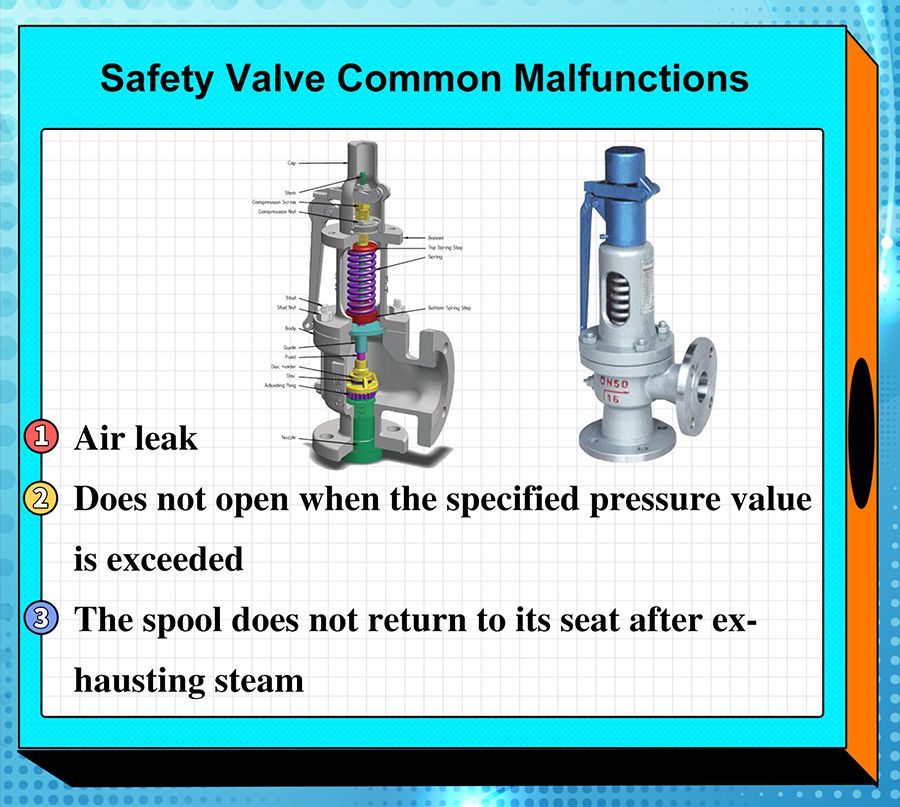
Common faults of safety valves include air leakage, failure to open when the specified pressure value is exceeded, opening before the specified pressure value, and the valve core not returning to the seat after exhausting steam.
1. The air leak causes and solutions
The air leak causes
①There is scale, sand or dirt attached to the sealing surface of valve core and valve seat
②The valve core and valve seat are worn
③The valve stem is bent or deformed or the valve core and the valve seat supporting surface are skewed
④The spring of the spring-loaded safety valve is permanently deformed and loses its original elasticity
⑤The lever and fulcrum of the lever-type safety valve are deviated, causing uneven force on the valve core and valve seat
The air leak solutions
①Purge the safety valve, if the effect is not obvious after the purge, the safety valve should be disassembled after the furnace is shut down to remove the attachments
②Replace the valve core and valve seat, or grind after turning on a lathe
③Replace the valve stem or readjust the level
④Replace the spring
⑤ Correct the center line of the lever to ensure strict verticality
2. Not opening when the specified pressure value is exceeded causes and solutions
Not open when the specified pressure value is exceeded causes
①The valve core and valve seat are stuck or rusted
②The gap between the valve stem and the housing is too small, and the valve stem is stuck after being heated and expanded
③Improper adjustment or maintenance has caused the spring of the spring-type safety valve to shrink too tightly, the distance between the weight of the lever-type safety valve and the fulcrum is too long, and the pig iron plate of the dead-weight safety valve is too heavy
④The valve channel is blocked by obstacles such as blind plates
Not open when the specified pressure value is exceeded solutions
①Purge the safety valve, if it is serious, grind the valve core and valve seat after stopping the furnace
②Appropriately increase the gap between the valve stem and the housing
③Re-adjust the safety valve
④Remove obstacles
3. Opening before the specified pressure value causes and solutions
Opening before the specified pressure value causes
①Improper adjustment or maintenance makes the spring pressure of the spring-type safety valve insufficient, the distance between the weight of the lever-type safety valve and the fulcrum is too short, and the weight of the cast iron plate of the dead-weight safety valve is not enough
②The spring is permanently deformed and the elasticity is weakened
Opening before the specified pressure value solutions
Replace the spring
4.The valve core not returning to the seat after exhausting steam causes and solutions
The valve core not returning to the seat after exhausting steam causes
①The spring is bent
②The valve stem and valve core are not installed in the right position or are stuck
The valve core not returning to the seat after exhausting steam solutions
①Replace the spring
②Reinstall the safety valve
High and Low Water Level Alarm
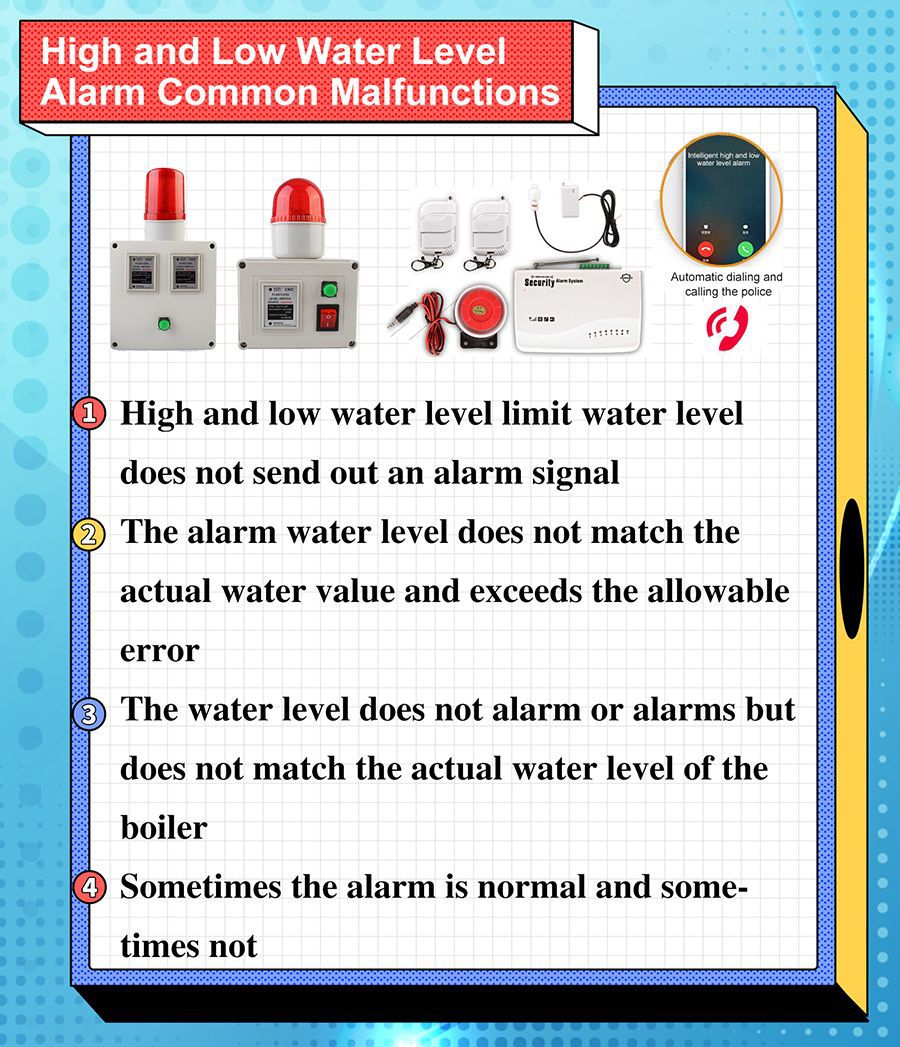
There are two types of high and low water level alarms commonly used in boilers: float type and electrode type.
1.The high and low water level limit water levels that do not send out alarm signals causes and solution
The high and low water level limit water level does not send out an alarm signal causes
①The power is not connected, the power fuse is blown, the electrical part is faulty or the line is faulty
②Floating ball type connecting pipe is blocked, fouling in the shell and up and down of the floating ball hinders the movement of the floating ball, and the floating ball is damaged by leaking and sinking.
③The connecting pipe of the electrode type is blocked, and the electrode is fouled
The high and low water level limit water level does not send out an alarm signal solutions
①First check the power supply, wiring and electrical parts for faults
②Recheck and clean the water and connecting pipes in the shell to remove the scale on the electrodes
③Strengthen water quality supervision, and carry out regular sewage discharge on the shell
2. The alarm water level that does not match the actual water value of the boiler and exceeds the allowable error causes and solutions
The alarm water level does not match the actual water value of the boiler and exceeds the allowable error causes
① Floating ball type The position of the high and low limit water level switches in the adjustment box has not been adjusted well or has not been adjusted at all. If the high and low limit alarm water levels are gradually higher at the same time, it may be that the floating ball has begun to leak.
② Electrode type The electrode in the measuring cylinder is not adjusted properly
The alarm water level does not match the actual water value of the boiler and exceeds the allowable error solutions
① Floating ball type Adjust the position of the high and low limit water level switches in the tank. If it is still invalid, check if the float is damaged
② Electrode type Adjust the position of the electrode on the measuring cylinder and check the insulation between the measuring cylinder and the electrode
③Strengthen daily inspection
3. The water level does not alarm or alarms but does not match the actual water level of the boiler causes and solutions
The water level does not alarm or alarms but does not match the actual water level of the boiler causes
① Floating ball type: A certain water level switch in the adjustment box fails or the switch position is not adjusted properly, and the lifting of the float ball is partially blocked.
② Electrode type The position of an electrode in the measuring cylinder has not been adjusted well, or the electrode has scale on the electrode and the insulation is poor. Some electrical parts are damaged, and the circuit is broken
The water level does not alarm or alarms but does not match the actual water level of the boiler solutions
First check the electrical parts and wiring, check the working status of the water level alarm, and strengthen daily inspections.
4. sometimes normal alarms and sometimes no alarms causes and solutions
Sometimes normal alarm and sometimes not the alarm causes
①Floating ball type: The joints of the circuit and the electrical part are virtually connected, the wire is broken or the insulation is partially damaged, the water level switch in the adjustment box is faulty, and the movement of the float is blocked.
②Electrode type: The joints of the circuit and the electrical part are virtually connected, the wire is broken or the insulation is partially damaged, and the insulation between the electrode and the measuring cylinder is unreliable
Sometimes normal alarm and sometimes not the alarm solutions
First check the electrical parts and wiring, check the working status of the water level alarm, and strengthen daily inspections
Blowdown Device
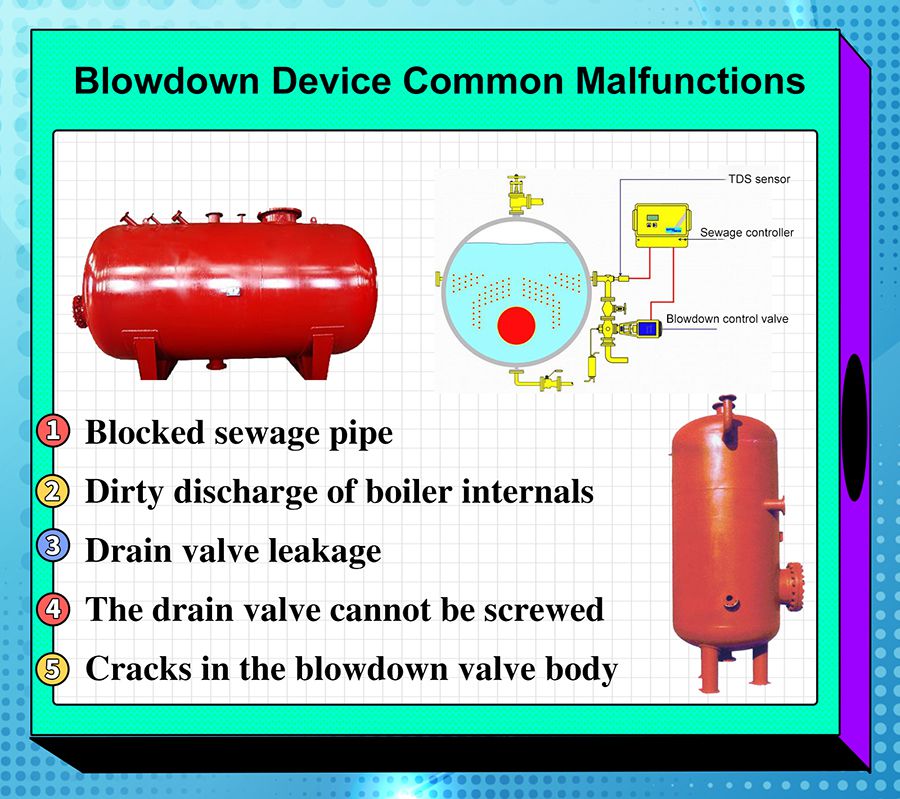
Common faults of blowdown equipment
1. The sewage pipe is blocked
2. Dirty discharge of boiler internals
3. The installation position of the blowdown valve is not easy to operate
4. For boilers with evaporation capacity ≥1t/h or working pressure ≥0.7MPa, each drain pipe has only one drain valve
5. Leakage of the drain valve
6. The drain valve cannot be screwed
7. Cracks in the blowdown valve body
Analysis the failure of the blowdown device causes
1. Improper design, too thin drain pipe, improper installation of drain valve position
2. The leakage of the blowdown valve is due to the inconsistent operation sequence, which causes the two blowdown valves in series to wear at the same time. When a valve with a non-straight passage is used as a drain valve, the valve core is stuck by dirt, which will also cause drain leakage.
3. If the sewage is not discharged for a long time, the valve stem will be rusted and cannot be discharged
4. Poor quality of the blowdown valve, made of gray cast iron, can not withstand the impact of the blowdown, causing the valve body to crack
5. After the water pressure test, the accumulated water is not exhausted, or the boiler is stopped and the valve is frozen in winter, which is the cause of the valve body bursting and cracking
Blowdown device solutions
1. Appropriately increase the diameter of the sewage pipe, the sewage pipe and the sewage valve on the header DN≥20mm, the boiler shell boiler sewage pipe and the sewage valve N≥40mam
2. The position of the sewage pipe should be at the lowest point of the drum or header, and a sewage suction supervisor should be installed in the drum to enhance the effect of sewage discharge
3. When arranging the blowdown valve, the convenience of operation should be considered, and the operating sequence of the blowdown valve should be unified according to the operating regulations.
4. Do a good job of water treatment, sewage pipes and other related pipes should be kept clean and dry
5. The blowdown valve of the general cast iron valve body should be replaced, and the general shut-off valve and spherical valve are not suitable for the blowdown valve. Shut down the boiler in winter, and drain the stagnant water
Conclusion
Through the above content, you can have a comprehensive understanding of boiler safety accessories and valve failures, understand boiler failures and take corresponding measures to actively prevent them, and your boiler can be used more safely and lastingly.
EPCB, your private boiler system expert!
Further Reading:
Boiler Safety Series | Boiler Tube Burst Causes and Preventive Measures in Boiler Accidents
Boiler Safety Guide | Industrial Boilers'Common Accidents and Solutions
Boiler Safety Series | Boiler Water Level Accidents Causes and Preventive Measures
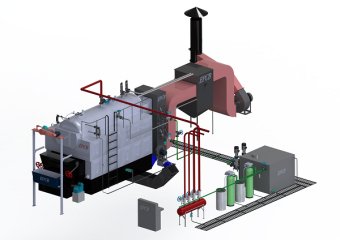 Steam Boiler
Steam Boiler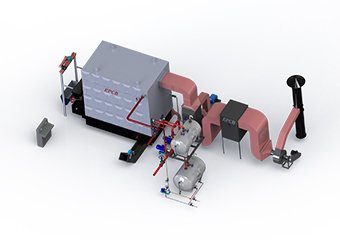 Thermal Oil Boiler
Thermal Oil Boiler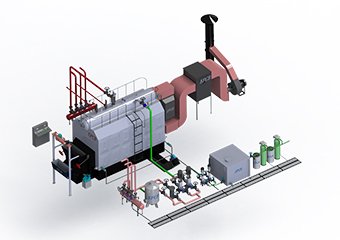 Hot Water Boiler
Hot Water Boiler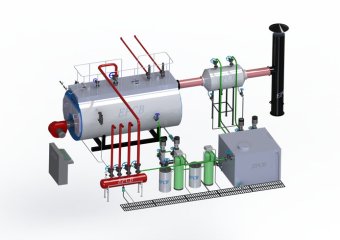 Steam Boiler
Steam Boiler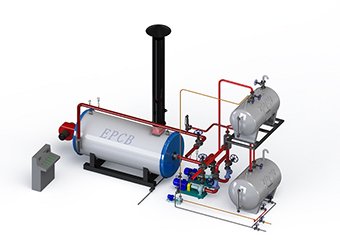 Thermal Oil Boiler
Thermal Oil Boiler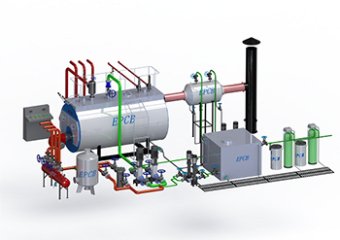 Hot Water Boiler
Hot Water Boiler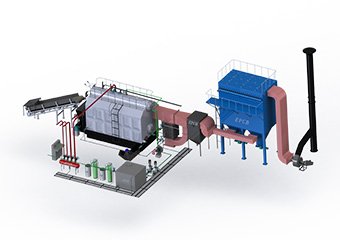 Steam Boiler
Steam Boiler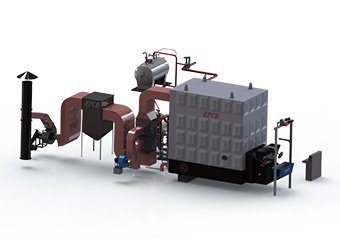 Thermal Oil Boiler
Thermal Oil Boiler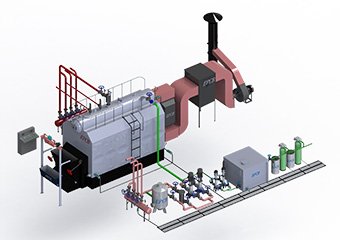 Hot Water Boiler
Hot Water Boiler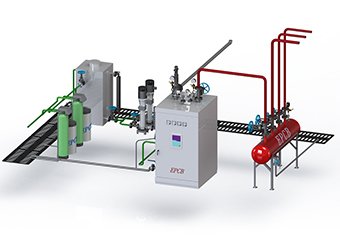 Steam Boiler
Steam Boiler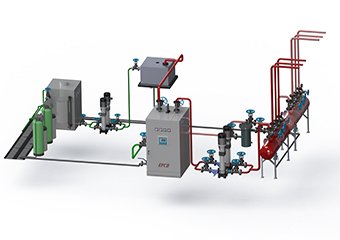 Hot Water Boiler
Hot Water Boiler



















